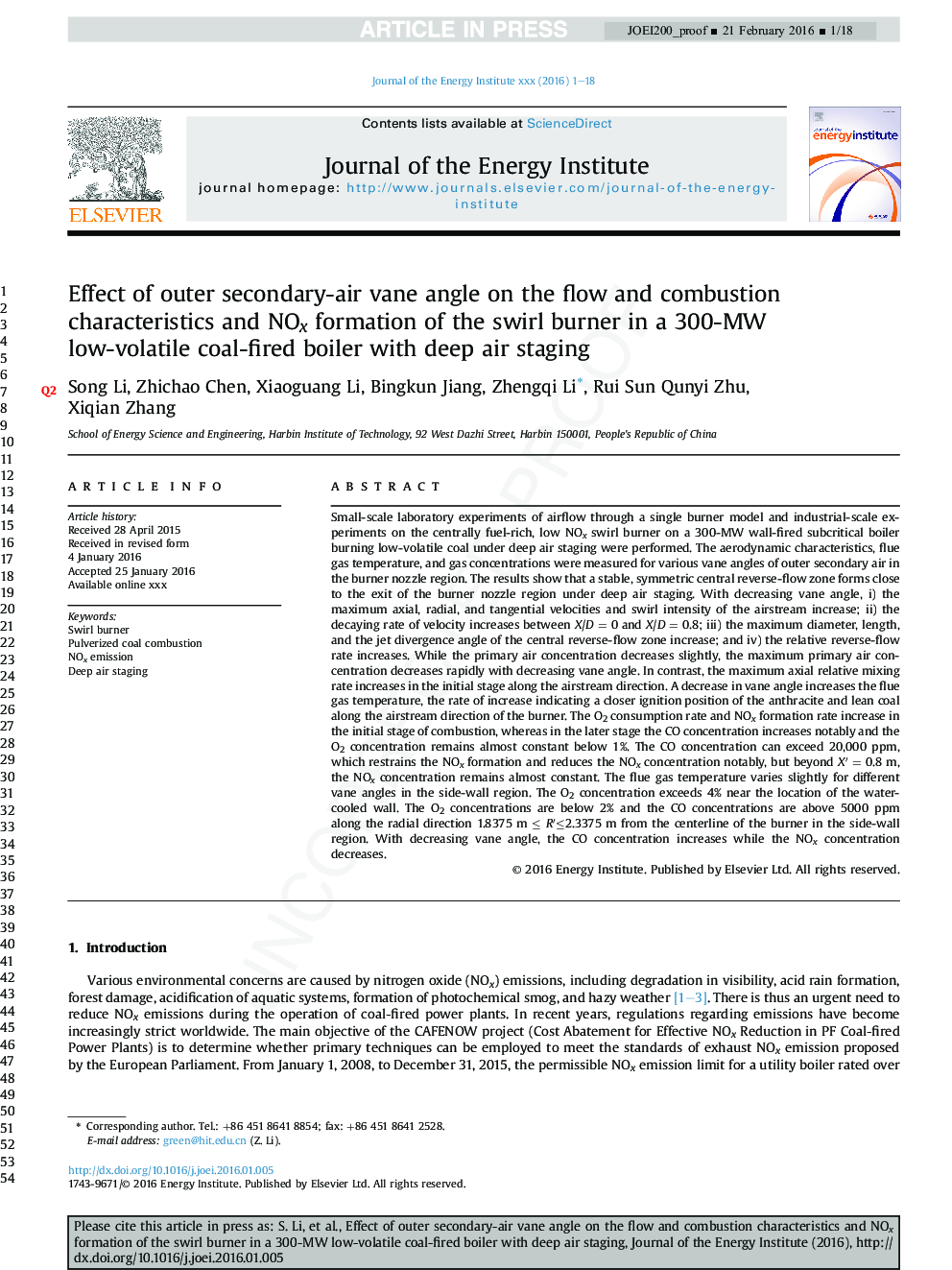| کد مقاله | کد نشریه | سال انتشار | مقاله انگلیسی | نسخه تمام متن |
|---|---|---|---|---|
| 8109155 | 1522250 | 2017 | 18 صفحه PDF | دانلود رایگان |
عنوان انگلیسی مقاله ISI
Effect of outer secondary-air vane angle on the flow and combustion characteristics and NOx formation of the swirl burner in a 300-MW low-volatile coal-fired boiler with deep air staging
دانلود مقاله + سفارش ترجمه
دانلود مقاله ISI انگلیسی
رایگان برای ایرانیان
کلمات کلیدی
موضوعات مرتبط
مهندسی و علوم پایه
مهندسی انرژی
مهندسی انرژی و فناوری های برق
پیش نمایش صفحه اول مقاله

چکیده انگلیسی
Small-scale laboratory experiments of airflow through a single burner model and industrial-scale experiments on the centrally fuel-rich, low NOx swirl burner on a 300-MW wall-fired subcritical boiler burning low-volatile coal under deep air staging were performed. The aerodynamic characteristics, flue gas temperature, and gas concentrations were measured for various vane angles of outer secondary air in the burner nozzle region. The results show that a stable, symmetric central reverse-flow zone forms close to the exit of the burner nozzle region under deep air staging. With decreasing vane angle, i) the maximum axial, radial, and tangential velocities and swirl intensity of the airstream increase; ii) the decaying rate of velocity increases between X/D = 0 and X/D = 0.8; iii) the maximum diameter, length, and the jet divergence angle of the central reverse-flow zone increase; and iv) the relative reverse-flow rate increases. While the primary air concentration decreases slightly, the maximum primary air concentration decreases rapidly with decreasing vane angle. In contrast, the maximum axial relative mixing rate increases in the initial stage along the airstream direction. A decrease in vane angle increases the flue gas temperature, the rate of increase indicating a closer ignition position of the anthracite and lean coal along the airstream direction of the burner. The O2 consumption rate and NOx formation rate increase in the initial stage of combustion, whereas in the later stage the CO concentration increases notably and the O2 concentration remains almost constant below 1%. The CO concentration can exceed 20,000 ppm, which restrains the NOx formation and reduces the NOx concentration notably, but beyond Xâ²Â = 0.8 m, the NOx concentration remains almost constant. The flue gas temperature varies slightly for different vane angles in the side-wall region. The O2 concentration exceeds 4% near the location of the water-cooled wall. The O2 concentrations are below 2% and the CO concentrations are above 5000 ppm along the radial direction 1.8375 m â¤Â Râ²â¤2.3375 m from the centerline of the burner in the side-wall region. With decreasing vane angle, the CO concentration increases while the NOx concentration decreases.
ناشر
Database: Elsevier - ScienceDirect (ساینس دایرکت)
Journal: Journal of the Energy Institute - Volume 90, Issue 2, April 2017, Pages 239-256
Journal: Journal of the Energy Institute - Volume 90, Issue 2, April 2017, Pages 239-256
نویسندگان
Song Li, Zhichao Chen, Xiaoguang Li, Bingkun Jiang, Zhengqi Li, Rui Sun, Qunyi Zhu, Xiqian Zhang,